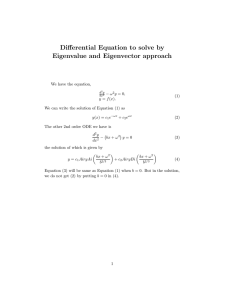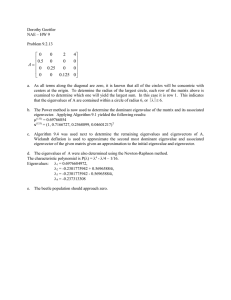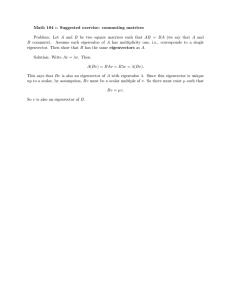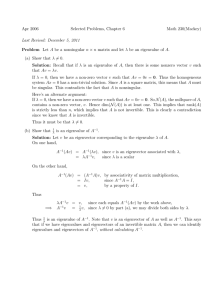EIGEN VALUES AND EIGEN VECTORS POWER METHOD - Copy
advertisement
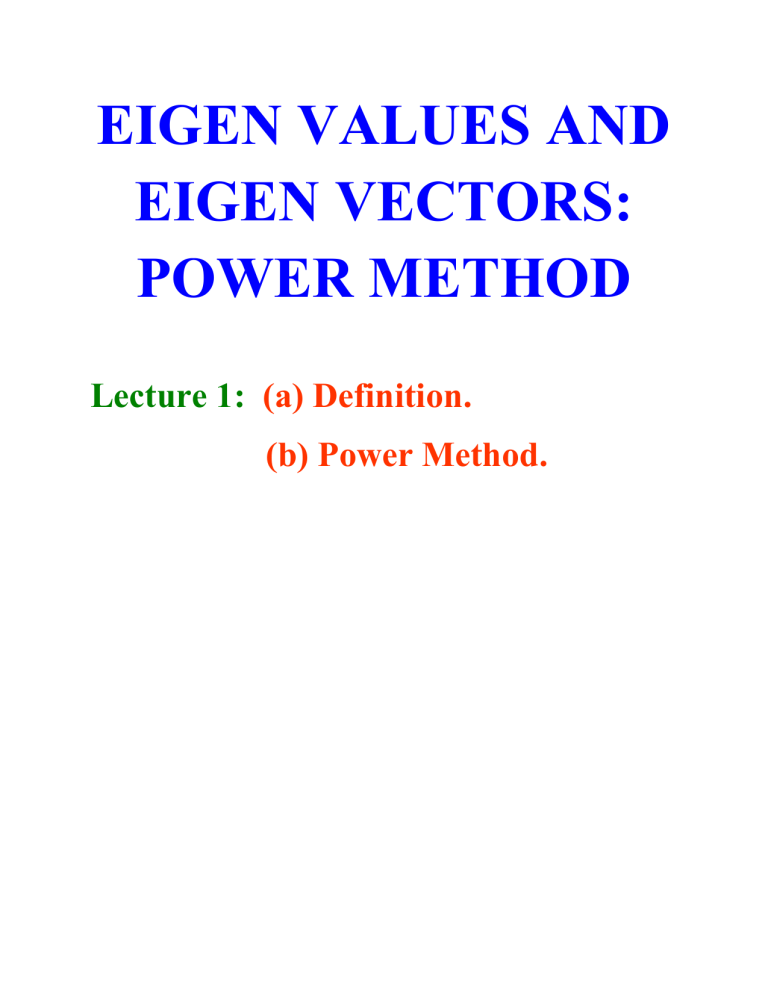
EIGEN VALUES AND EIGEN VECTORS: POWER METHOD Lecture 1: (a) Definition. (b) Power Method. 1. Introduction Let A be a scalar such that matrix. A non-zero vector is an eigenvector of A if there exists a . The scalar λ is called the eigenvalue of the matri A, corresponding to the eigenvector . Let λ λ λ λ be the eigenvalues of a matrix A. If λ λ (i = 2, 3… n), then λ is called the dominant eigenvalue of A and the eigenvectors corresponding to λ , are called dominant eigenvectors. Let us consider a system for which we want to find the eigenvalues and eigenvectors. The standard method for that is to solve for the roots of λ of the characteristic equation λ When A is large, this method is totally impractical. Evaluating the determinant of a matrix is a huge task, when n is large and solving the resulting n-th degree polynomial equation for λ is another additional task on top of that. The power method is a simple iteration method that can be used to find λ and for a given matrix A, where λ is the largest eigenvalue and is the corresponding eigenvector. Similarly, the inverse power method is used to find the smallest eigenvalue and its corresponding vector, which is very similar to power method. 2. Power Method We first assume that the matrix A has a dominant eigenvalue with the corresponding dominant eigenvectors. As stated before, the power method for approximating eigenvalues is iterative. Hence, we start with an initial approximation of the dominant eigenvector of A, which must be non-zero. Thus, we obtain a sequence of eigenvectors given by =A 0 = A 1 = A (A 0) = =A 2 = A ( 0) = ………................................ ………................................ = A k-1 =A ( 0) = When k is large, we can obtain a good approximation of the dominant eigenvector of A by properly scaling the sequence. Example 1: Use power method to approximate a dominant eigenvalue and the corresponding eigenvector of correct to 3-significant figures, after 10 iterations. Solution: We begin with an initial non-zero approximation of dominant eigenvector as and obtain the following approximations as A = From the above step, it is clear that after performing A , the dominant element of the matrix is taken out (which is 4.00 in this case, correct to 3- significant figures). The corresponding vector will be the new initial vector for the next approximation. We now obtain the series of approximations as follows: = = , Therefore, the dominant eigenvalue, correct to 3-significant figure is 2.00 and the corresponding eigenvector is . Example 2: Use power method to approximate a dominant eigenvalue and the corresponding eigenvector of , correct to 3-significant figures, after 11 iterations. Solution: We begin with an initial non-zero approximation of dominant eigenvector as and we obtain the following approximations as = 12.00 As explained in Example 1, we take out the largest element of the resultant matrix (which is 12 in this case) and will be our new initial vector. Proceeding in this manner we obtain a series of approximations as follows: Therefore, the dominant eigenvalue, correct to 3-significant figure is 4.00 and the corresponding eigenvector is . Exercises 1. Using Power Method, find the dominant eigenvalue and the corresponding eigenvector of the following matrices: (i) (ii) (iii) (iv)

